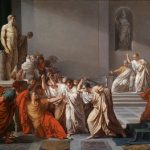
By John Myers
I have wanted to do a project like this ever since I came to OISE. I had led a curriculum team of grade 5 teachers for a unit in Social Studies for the Toronto School Board in 1982-3: Technology and You. I saw rare examples of marvelous use in the history classroom such as simulations through programs like Decisions, Decisions, and creating and analyzing historical census and street directory data from the Toronto and Ontario archives (I thank former teacher and retired principal, Marnie Taylor for many of these experiences at the middle and high school level in the mid-late 1980s).
When I came to OISE in the mid 1990s and realized that I was likely to stay awhile, I worked with and encouraged a number of teachers in the Honour Specialist course to explore the use of computers and the emerging potential of the internet. Some of this work was published in Rapport.
In a recent session on 21st Century Learning sponsored by the Toronto chapter of Phi Delta Kappa www.pdk-ut.ca (October 15, 2013) TDSB Superintendent and Doctoral candidate Karen Grose posed four questions for us to consider.
- How are we promoting creativity in our classrooms, schools, school districts and our workplaces?
- Are we implementing or are we innovating?
- How are we using technological tools to transform learning?
- Are our students genuinely engaged in their learning? Are we genuinely engaged in our learning?
The classes I had in 2011-17 in teacher education provided an opportunity to further explore the role of ICMT (Information, Communication, and Media Technologies). During practicum they explored issues related to technology and reflected on these. We published some of their work in Classnotes: an informal newsletter for my students’ school advisers.
The model we used for our analysis in our “Tools or Toys?” investigations comes from marketing and from being realistic.
The marketing part is the FAB formula
Features– what it is / how it works; intro
Advantages (for teachers)– what it does; we aimed this at teacher use
Benefits (for students)– the payoff / value; aimed at student learning
We added a “realistic” part based on experience the D– Drawbacks or challenges to implementation.
Rita Gravina from Bishop Strachan School and I introduced this approach at the November 2011 OHASSTA Conference based on classroom work in our session, 21st Century Thinking in History and the Social Sciences Using New Media. We see the FAB+D as a template for assessing any innovation schools are asked to examine.
We begin with POWERPOINT which I used as a model for my students in their work in 2011.
| F- Originally designed for the MAC and called “Presenter” (1990), it is a long-standing presentation program; http://office.microsoft.com/en-us/powerpoint/ and http://www.actden.com/pp/ offer overviews of its many features and they get regular updates.A– ease of use compared to overheads and drawing on the chalkboard; additional features can add variety to structured presentations through the use of colour, animation, sound, etc.B– the advantages for teachers also benefit students + students can focus on key ideas and can learn these principles in preparing their own classroom presentationsD https://www.youtube.com/watch?v=MjcO2ExtHso andhttp://power-points.blogspot.ca/ show the drawbacks unless you Keep It Simple, Stupid! (KISS principle).What Teachers Say– Pessimistic view: http://okasaki.blogspot.ca/2008/01/why-i-dont-use-powerpoint-for-teaching.html– Optimistic view: combining a phrase with a picture that connects to students emotionally + a little interaction helps the message stick. A provocative proposition or key question can also promote critical discussion; for example, “Turn to your neighbour and discuss the truth of the following: ‘Jazz could only have been invented in the United states.’ ” (from an American history unit on the 1920s- John Myers)TipsPlan your presentation OFF powerpoint to avoid the paralysis of too many choices. Do not let the technology control your messages.Make sure people can easily read/view slides with simple, clear messages.Do not read aloud to the audience: have them read and react/interact.All of the above sites accessed January 11, 2019.Going Further (these are no longer active but I include them as our exemplar)http://www.slideshare.net/paulwill/powerpoint-for-teachers http://www.web-conferencing-zone.com/powerpoint-presentation-tips.htmhttp://www.heathbrothers.com/madetostick/ |
This work is ongoing and these days with the controversies around social media and its use, relevant. The nature of communications technology could be a unit or course theme for history, social science, law, economics, philosophy, and more.
The next Pedagogical Perspective will offer a teaching approach for exploring issues of technology and social media in CWS and SS&Hs courses.
John Myers teaches at OISE. He is a regular contributor to Rapport.


